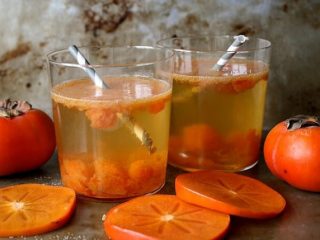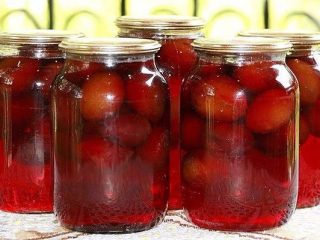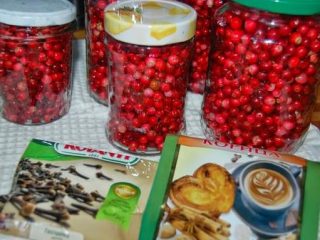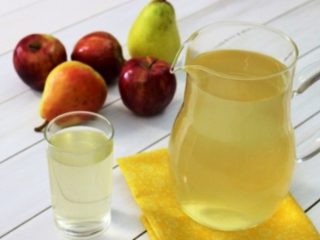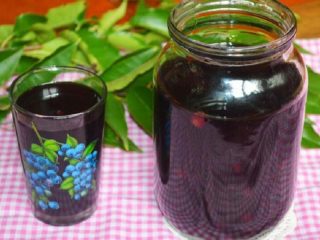Content
Figs are an amazing berry that evokes associations with summer, sun and relaxation. It is beneficial for the human body because it contains a large amount of vitamins. The product has a diuretic and laxative effect. The fruits of the wineberry (as figs are called) are eaten not only fresh, but also canned. Fresh fig compote for the winter is popular with many housewives, because it is not only tasty, but also healthy.
Benefits of fig compote
Fresh berries are rich in vitamins (C, PP, B1, B3) and minerals (potassium, magnesium, calcium, sodium, phosphorus). Winter preparations also have beneficial properties. Figs are recommended for consumption by people suffering from anemia, as they contain the necessary vitamin and mineral complex that can improve blood composition. Fresh mulberry fruits are used to prepare berry drinks, jams and preserves.
The decoction has diuretic and laxative properties. Thanks to the potassium it contains, berry infusion has a healing effect on the heart and blood vessels.
When fresh, the fruits contain a large amount of glucose, while they do not contain fat, but they are quite nutritious and can satisfy hunger for a long time.
Recipes for fig compote for the winter
Summer is considered the time to preserve for the winter. Many housewives prefer to prepare compotes for the winter, since packaged juices or carbonated drinks are not as healthy as homemade preparations. In any case, homemade preparations are much tastier.
You can use any fresh fruit in homemade winter preparations: apples, grapes, strawberries, cherries, currants and much more. To enhance the taste, color and aroma, you can combine various berries and fruits, coming up with something new.
A simple recipe for fig compote
For preservation, you can use fresh or dried fruits. For each container (3 liters) you will need:
- fresh fruits – 300 g;
- sugar – 150 g.
Mulberry fruits are quite sweet, so sugar should be added gradually, tasting, as the product can turn out cloying.
The cooking algorithm is as follows:
- Pour 3 liters of water into the pan.
- Bring to a boil.
- Add fruits and sugar.
- After boiling, cook for 10 minutes.
- Pour into sterilized jars.
- Cover with lids.
- Place in a warm place upside down.
- Cover with a warm blanket.
After cooling to room temperature, the containers are sent for storage.
Compote of apples and figs
To prepare compote from fresh apples and figs, pre-prepare:
- fresh large red apples – 3 pcs.;
- figs – 400-500 g;
- granulated sugar – 100 g;
- clean water – 2 l.
The process looks like this:
- The fruits are thoroughly washed under running water.
- The apple is cut into 4 parts and the core is removed. If necessary, you can leave the apples in slices or cut them into arbitrary pieces.
- The figs should be cut in half.
- Most often, 3 liter jars are used for compotes for the winter. They are pre-sterilized along with the iron lids.
- Fruits and granulated sugar are poured onto the bottom.
- Fill with boiling water up to the neck.
- They're rolling up.
At this point the process is completed, the jars are left to cool and sent for further storage.
Compote of figs and grapes
Figs and grapes are a great combination for a drink. You can use any grapes - red, green, black. In most cases, housewives prefer green, sweet, seedless grapes.
To prepare a canned drink for the winter you will need:
- green grapes – 200-300 g;
- figs – 250 g;
- granulated sugar – 150 g;
- water.
The process is quite simple and does not take much time:
- The grapes are washed under running water, damaged and spoiled berries are removed, and separated from the bunch.
- The figs are washed; if they are too large, they can be cut into several pieces.
- Prepare the jars. Most often, 3 liter glass containers are used.
- Jars and lids are sterilized.
- Fruit and sugar are poured into the bottom of the jar.
- Pour boiling water over.
- They roll up the cans.
- Allow to cool to room temperature in a warm place.
Since the fruits are quite sweet, you can first add citric acid to the jars at the tip of a knife or add a small thin slice of lemon, which will add sourness.
Compote of fresh figs and strawberries
Fresh strawberries give the compote an unusual taste. Unfortunately, during the cooking process it loses its appearance; it tends to disintegrate during prolonged contact with water.For those who like this combination, you will need to prepare fruit, water and granulated sugar.
Winter preparation technology:
- Pour 3 liters of water into the pan.
- Bring to a boil.
- Add chopped figs and whole strawberries.
- Add sugar to taste.
- Bring to a boil.
- Cook for 15-20 minutes.
- After which the compote is filtered into sterilized jars and rolled up.
The remaining fruit can be used to make a delicious dessert.
Terms and conditions of storage
After the preparations for the winter are ready, they are sent for further storage. If there are not many cans, they can be stored in the refrigerator; for large volumes of canned products, a cellar will be required.
In a cellar, canned food can be stored without loss of taste and beneficial properties for 2–3 years. At room temperature, shelf life is reduced to 12 months.
Conclusion
Fresh fig compote for the winter is not only healthy, but also very tasty. Despite the fact that the decoctions are subjected to heat treatment, the beneficial properties of the berries and fruits are preserved.



